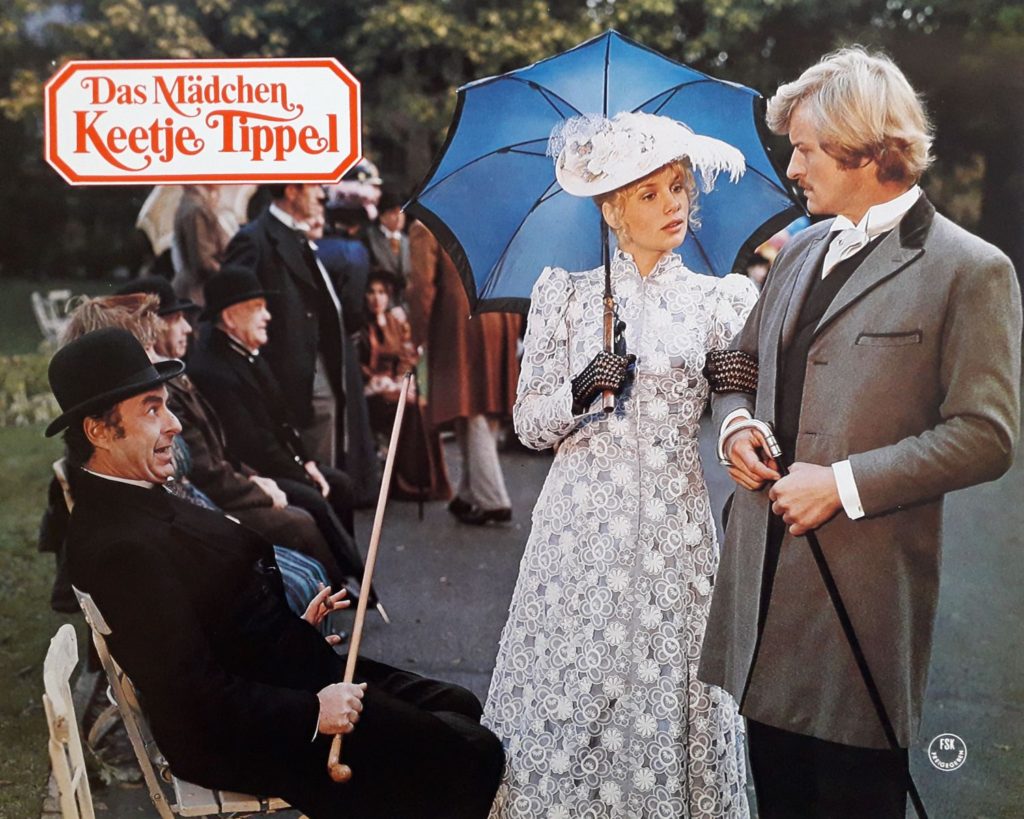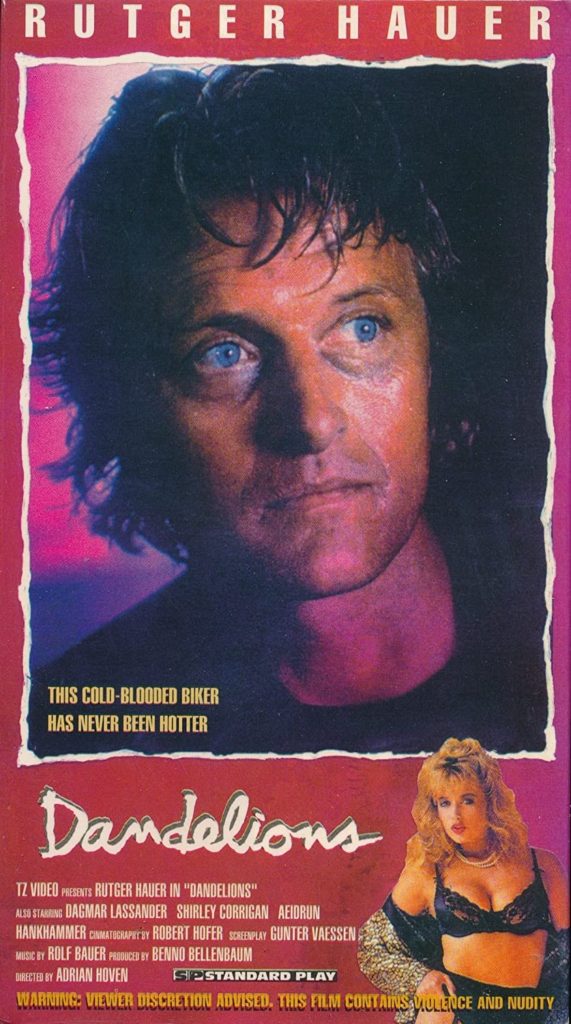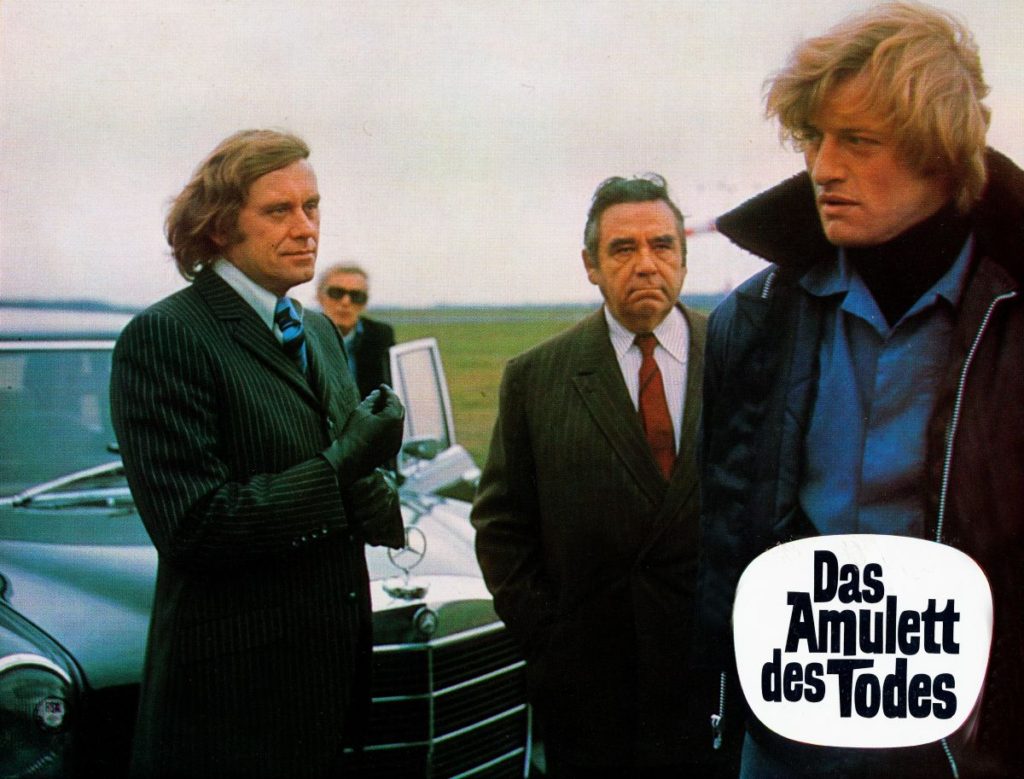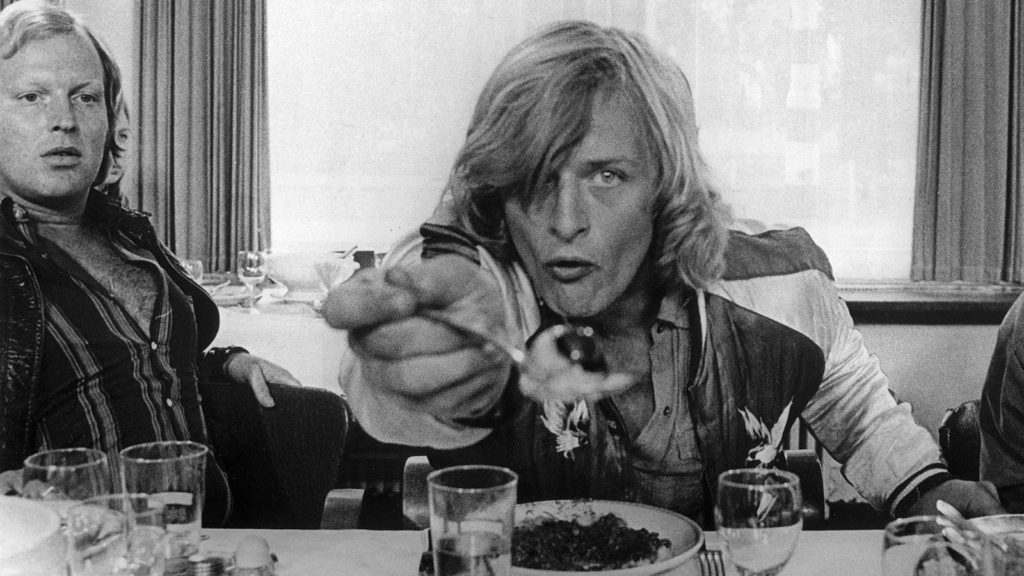The Early Life of Rutger Hauer
Rutger Hauer’s reputation stands mostly on his work done since “Blade Runner”, when his portrayal of replicant Roy Batty brought him to international attention. After that, he appeared in some of the most entertaining films of the 1980’s, such as “The Hitcher” and “Wanted: Dead or Alive”, as well as the unparalleled Guinness adverts which he helped to create. But before “Blade Runner”, he’d already been starring in European films for ten years, mostly in his native Netherlands. Some of this early work is quite famous: “Soldier of Orange” gained significant rep, to the extent of winning the Oscar for Best Foreign Film that year. However, others are not so well known, so let’s go back in time….

Keetje Tippel (Kathy’s Passion, a.k.a Hot Sweat) (Paul Verhoeven) – 1975
First stumbled across as ‘Hot Sweat’, it was difficult to believe that this truly was it’s original title, as the rest of the packaging bears little resemblance to the movie, with neither Hauer nor Monique Van De Ven bearing much resemblance to their cover pictures, and a blurb which makes it seem slightly more sleazy than ‘I Spit On Your Grave’. And it was indeed a gratuitous retitling, but it’s still of interest, if only for the number of people involved who are also known for other things: apart from Hauer, and director Verhoeven, the cinematographer was Jan de Bont, who went on to shoot ‘Die Hard’ and, of course, direct ‘Speed’.
Despite these credentials, what we have here is less action film than earnest little social drama, set in Holland about the turn of the century. A family move to the town from the countryside, hoping to find a better living there. Needless to say, they don’t – it’d be a dull movie if they did – and daughter Kathy (Van de Ven) slides into a downward spiral, ending in prostitution. Luckily, this doesn’t last long: her second client is Rembrandt, who decides to use her as a model. One of his friends (Hauer – at last!) takes a fancy to her, and it all eventually ends happily.
While allegedly biographical – the author was nominated for a Nobel prize, according to a final caption – it doesn’t really ring true. Seems a tad too sanitized: take the nudity away and this could be a Sunday evening BBC serial. However, the performances are solid, Van de Ven doing a nice job in the sparky-heroine-who-won’t-give-up role, and the period atmosphere is also successfully evoked. Hauer’s role is small; his major activity is punching the stomach of a man who recognises his girlfriend from her early, ahem, career. Maybe it’s just me, but Verhoeven seems to have enjoyed this single moment of literally visceral violence… C-
Dandelions (Adrian Hoven) – 1974

For the first hour, this is an intriguing beast. Hauer is a screwed-up ex-sailor, obsessed by a poster of a girl blowing on a dandelion, whom he feels represents the ideal woman. His attitude to the female race has been severely warped, since his wife became a junkie whore while he was away at sea. As a result, he now spends his time being generally unpleasant to any female who crosses his path – and many do, attracted by his handsome looks. He finally gets to meet the model for the poster, after a spurned woman hires her to “teach him a lesson” by spurning him in return, only for the duo really to fall in love. Which, sadly, is where the film falls apart.
This combination of hunk and misogynist is an ideal role for Rutger Hauer and he cheerfully gets his teeth into it. It’s easy to see why women fall for him and, after his history is explained, why he’s being so nasty. So when he meets the model, we are all set up for a solid and vicious conclusion. But we don’t get it. The pair’s relationship is portrayed with perfect regard for every 70’s cliché you can imagine – slow-motion, crap music, flared trousers, the works. While perhaps understandable given the date, this doesn’t make it any less naff. And the ending is one of the worst I’ve ever seen: it contrives to tie up the loose ends in perhaps 120 seconds, without managing to be satisfactory in any way. Maybe they ran out of time, energy, money or ideas; the end result is certainly nowhere near as good as it ought to have been, especially after the barn-storming opening. D-
Das Amulett des Todes (a.k.a. Cold Blood) (Ralf Gregan and Gunter Vaessan) – 1974
You know you’re watching a low-budget film when one opening credit is ‘Music and Special Effects By’. This is 100% accurate here, though for 90% of the movie, the result isn’t too bad. Pilot Hauer, occasionally works for a mysterious (intelligence?) organization, but wants out. They don’t want him to go: however, after he steals a case of money he should be delivering and does a runner, the chase is on. He’s aided by a woman whose life he stumbles into and hunted by his employers who want the cash back.
This feels quite a bit like ‘Wedlock’, a more recent film of Hauer’s which is also about a guy on the run with a woman, looking for loot that he’s hidden. The chief ploy in ‘Cold Blood’, however, is to keep information hidden – it starts with the heroine knowing nothing, and we only find out about Hauer and his past, as she slowly does. The film escalates nicely, until heroes and villains are in and around a ruined castle where the money is stashed. Then someone starts killing characters off with a telescopic rifle? Who is it? Sadly, once more, the answer is a lot less interesting than the questions, though what happens to the money is a nicely cynical touch. Chalk up another ‘coulda been a contender’ film. [Oddly, once again there is an eventually-famous cinematographer: Michael Ballhaus, who’s since done “Goodfellas” and “Bram Stoker’s Dracula”.] D

Turkish Delight (Paul Verhoeven) – 1973
Deja vu. Going by the cast and crew list on this one, you could be forgiven for thinking you’ve seen – or at least read about – this before. Hauer, Van de Ven, Verhoeven and De Bont all make a reappearance, together with frequent Verhoeven scriptwriter, Gerard Soeteman. Hauer’s character, the appropriately named Eric Bonk, also seems straight out of ‘Dandelions’, a serial woman-hater for whom a one-night stand is a long-term relationship. In this case, however, rather than a quest for perfection, it’s down to events in his past, flashbacks to which occupy the majority of the movie.
As previously mentioned, this kind of role suits Hauer down to the ground, and Verhoeven seems better able to handle the ensuing emotional intensity than Adrian Hoven manages. It’s irregularly amusing, with Hauer’s wild character causing chaos in a variety of forms (for example, one of which involves a statue, a dress that won’t stay up, and the queen of the Netherlands!), and all supporting roles are solidly presented. At first, the new love he’s found seems ideal for him, but the flashback structure means we know it’s doomed to failure – the only questions are how and when. It manages to avoid too much of the classic 70’s style, so unerringly hit by ‘Dandelions’, and is worth a look; it’s now out on sell through, unashamedly trading on both star and director’s subsequent careers! C+

These four films do not represent the sum total of Hauer’s pre-Hollywood career. “Spetters”, another Verhoeven movie, has been previously reviewed in TC, and he played Blane Van Neukirk in “The Wilby Conspiracy”, made in 1975. There’s also “Max Havelaar’ – or to give it’s full Dutch title, “Max Havelaar of de Koffieveilingen der Nederlandse Handelsmaatschappij”. I’ve never seen my spell-checker so totally perplexed: wonder if they made the posters especially broad so they could fit the name on. If there’s a conclusion to be drawn, it’s that you can see Hauer experimenting with his various personas. You can detect flashes of Roy Batty, John Ryder, Nick Randall and Stone in these early roles. Of course, as films like “Legend of the Holy Drinker” show, Hauer is not restricted to genre parts, but it is probably these that guarantee his status as one of the leading cult actors of our time.